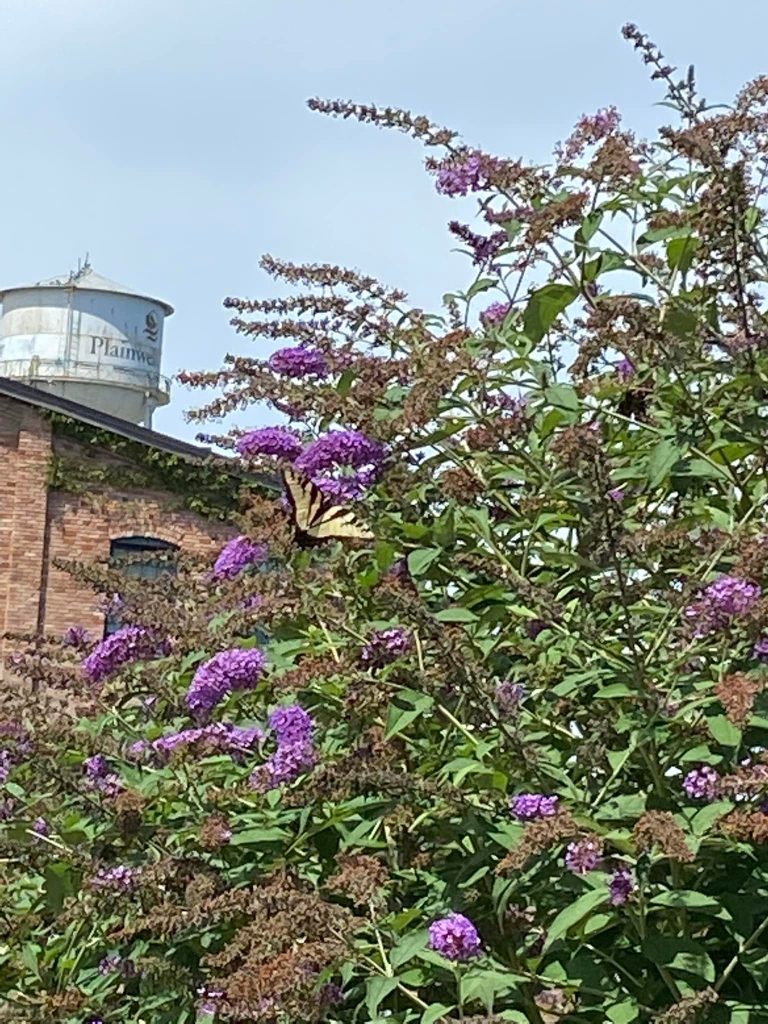
Four local organizations hope that residents of Plainwell will soon be busy collecting milkweed seeds for the Seed Exchange at Ransom Library.
The seeds will grow milkweed plants, the only food source for monarch caterpillars/butterflies. This effort is part of Mayor’s Monarch Pledge Survey from the National Wildlife Federation to help monarch butterflies. The City of Plainwell supported the pledge on March 1, 2022.
Monarchs have been declared endangered by the International Union for Conservation of Nature. The U.S. Fish and Wildlife Service lists monarchs as threatened as the numbers have been declining over the past 30-40 years.
The Plainwell Parks and Trees Commission will annually see to the completion of various activities to support the Mayor’s Monarch Pledge to increase the monarch population. This year, those activities include collecting and offering milkweed seeds through the newly revamped Seed Exchange located in the lobby of Ransom Library, as well as other support communications and encouragement activities within the community.
The local Seed Exchange is managed by local Chula Vista Garden Club, through efforts of the project chair and Plainwell native Cathy McAuliffe. Milkweed seeds for monarch butterflies are included, along with many other vegetable and flower seeds as part of the Seed Exchange.
The endangered monarch butterfly passes through Michigan each year. Monarch caterpillars feed exclusively on the leaves of milkweed, the only host plant for the iconic butterfly species. Monarchs lay their eggs on the backs of the leaves, and the leaves themselves provide food for the newly hatched monarch butterfly caterpillars.
The four stages of the lifecycle of the monarch butterfly are:
1.Monarch egg on back of milkweed leaf (hatch in about 3-5 days).
- Monarch caterpillar (lives for about 2 weeks)
- Metamorphosis in a chrysalis with Monarch butterfly emerging (10-14 days).
- Monarch butterfly (lives 2-6 weeks except for last generation which can live 7-9 months).
A butterfly’s migration covers 50 to 100 miles per day with a total distance of up to 2,500-3,000 miles.
Milkweed seed pods and their fluffs of white appear along country roads in Michigan every fall. Unfortunately, because of urban development, fewer milkweeds are available to sustain the monarch butterflies.
More milkweed plants in Michigan mean more places and more food for monarchs on their migration pattern. Milkweeds also produce pollen and nectar for bees and other butterflies and pollinators.
According to Douglas Tallamy, professor and chair of the Department of Entomology Ecology and Wildlife Ecology at the University of Delaware, in his book “Bringing Nature Home,” “it is not yet too late to save most of the plants and animals that sustain the ecosystems on which we ourselves depend.”
Tallamy touts the value of native plants such as milkweed in these efforts.
There are about a dozen types of milkweed that are native to Michigan. However, two types generate the most surviving monarch eggs, caterpillars and butterflies: Common Milkweed (Asclepias syriaca) and Swamp Milkweed (Asclepias incarnata).
Below are three options for collecting, saving, and planting milkweed seeds. - Collect seeds for the Seed Exchange at Ransom Library.
After a few frosts/freezes in late October and early November is the best time to find yellow/brown milkweed seed pods from which you can collect milkweed seeds to plant in spring for monarchs.
- Collect only the little brown seeds from the seed pods. Remove the white fluff by putting them all in a paper bag and shaking vigorously.
- Make sure your seeds are free from insects or extra plant material.
- Put seeds in an envelope marked with “Milkweed” and type if known, your name and contact information.
- Deliver envelope to the Seed Exchange in the outer lobby of the Ransom Library.
- Collect and plant the seeds yourself this fall.
- Choose a sunny spot and plant the seeds this fall when the soil is too cold for seeds to germinate but the ground is not yet frozen.
- Water so that the soil is moist.
- Poke small hole in soil, drop a seed, and cover with soil, repeat.
C. Collect and save the seeds for spring planting. - Save seeds for spring planting and winterize in a process called vernalization.
- Put seeds in moist soil or peat and store in a refrigerator or layer seeds between moist paper towels in a baggie in the refrigerator crisper, keeping them cold for 3 weeks to 3 months.
- Milkweed seeds can be direct sown in spring, but transplants have better success.
- Seeds can be started indoors 4 to 6 weeks before transplanting outdoors.
- Fill pots or trays with light, well-drained soil. Add the seeds and cover with 0.25 inches of soil. Keep soil moist and pots in a sunny, warm spot or under grow lights.
- Once the danger of frost has passed and the milkweed starts have four true leaves, they can be transplanted outside. Water frequently until your plants are established.
If interested in visiting a Chula Vista meeting to learn about gardening, horticulture or environmental concerns, please contact Membership Chair Kathy Lesman at kathylesman@gmail.com or visit the Facebook page, Chula Vista Garden Club Plainwell/Otsego, Michigan.
